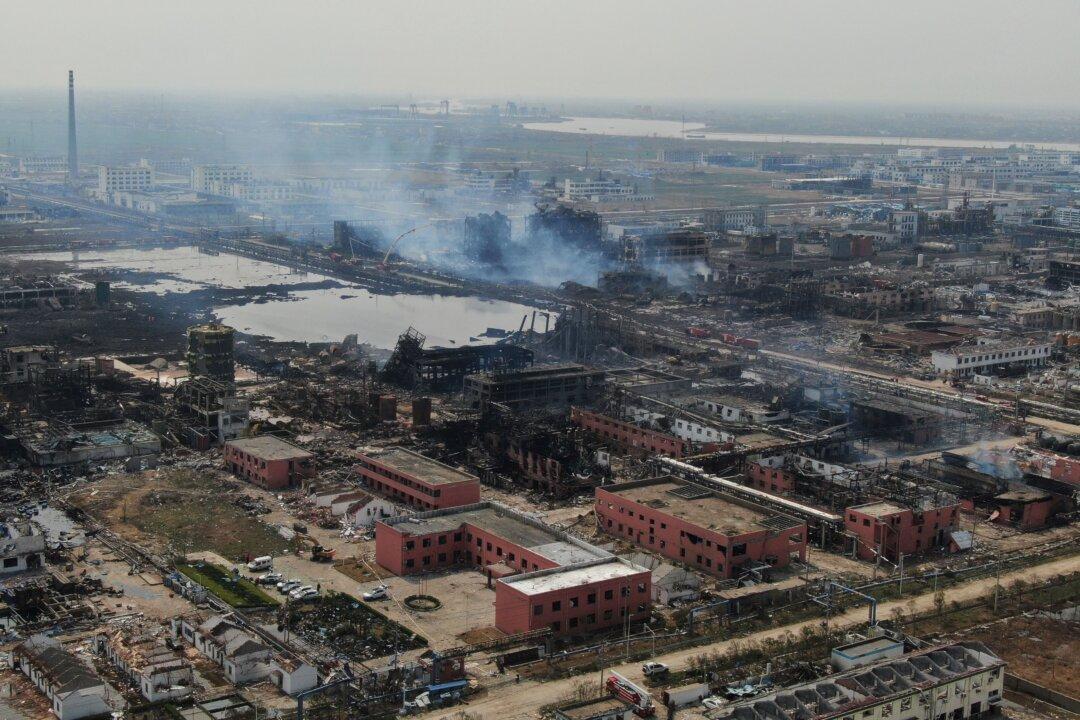Chinese netizens are searching for answers as the Chinese regime tightens control of news flowing from last week’s deadly chemical plant blast in China’s Jiangsu province.
The latest official death toll sits at 78 people, with 28 missing and more than 600 injured by the blast on March 21 at a pesticide factory in Chenjiagang Industrial Park in Yancheng City, Jiangsu Province, on China’s east coast.





